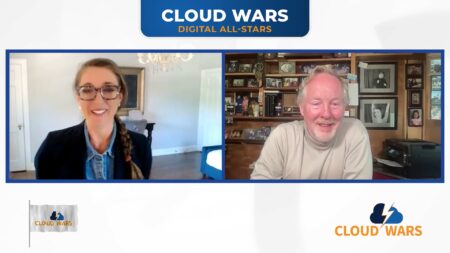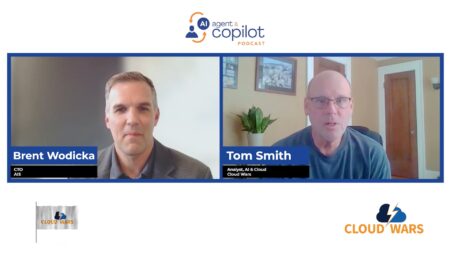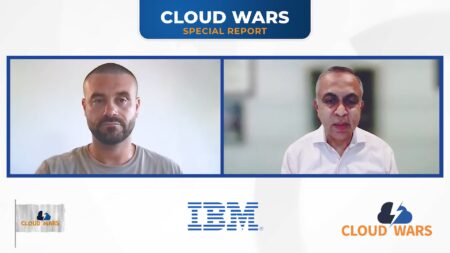Business models and customer requirements are changing fast. These changes are driven by digital and tech disruption, an explosion of available data, and savvier, demanding buyers. Both buyers and vendors are struggling to keep up with the pace of change, turning buyer-seller relationships into a game of cat and mouse. The Tom and Jerry show goes something like this…
B2B buyers prefer to research anonymously as they scope their needs, identify potential solutions, and evaluate prospective providers. While buying teams have access to huge amounts of information, they often lack the confidence to make decisions. Why? There’s an overwhelming number of options. The pace of new solutions coming to market is rapid. There is a high cost of buyers making bad decisions. Sellers are frustrated because they have ever-increasing goals to hit, yet can’t get in front of buyers. Meanwhile, Marketing is caught in the middle, trying to serve both and bring these two parties together. It sets up a high drama, worthy of a captivating Netflix series.
The Role of Marketing in Buyer-Seller Relationships
Marketing has reacted by investing in complex demand engines to connect both parties by generating loads of “leads”. The leads are sent to sales only to be rejected as “junk”. In an attempt to improve quality, Marketing reacts by generating more, adding traditional sales-oriented tasks. For example, these tasks include account research, cold calling, and follow-up.
Sales’ reaction? Do more themselves. They invest in a unique set of data and processes as well as a separate technology stack to find and engage buyers. They are essentially duplicating Marketing’s effort. Before you know it, these teams are in direct competition, creating an arms race fighting for the attention of their prospects and customers. This intense effort creates a larger divide between the two departments and pushes buyers away.
With an unprecedented opportunity to bring new marketing, sales strategies, and motions to the market, let’s break down the current state and figure out how we can improve the relationship.
Overwhelmed B2B Pros Face a Crisis of Buyers’ Confidence
Customers spend around two-thirds of any B2B buying journey gathering, processing, and de-conflicting information, according to Gartner research. There is simply too much noise. Furthermore, companies are cranking out too much content for B2B pros to digest and organize. We frequently hear, “…all the vendors and solutions sound the same” and “…all the content seems pretty good and on point”.
There are some ways that Marketing teams can help make their buyers more confident while setting up their sales colleagues for success. In their pre-sales effort, content, and outreach, Marketing teams should include how to buy, implement, and adopt their type of solution to achieve the best outcomes.
This confidence-building, deal-advancing approach can be delivered in the form of step-by-step guides (no gated forms to access it). As part of the process, show your best prospects how to set themselves up for and deliver success. Brent Adamson, a senior Gartner principal, puts it this way: “It’s not about customers’ confidence in suppliers, but rather building customers’ confidence in themselves and their ability to make good buying decisions.”
Buyer-Seller Relationships and Process is Broken
Buyers’ lack of confidence means the last thing they want is to talk to sales professionals before they’re ready. In fact, Gartner found that sales professionals are only involved in about 6-10% of the B2B buying process today. Buyers also don’t want to fill out forms. If they respond or provide any information, they know exactly what happens. There’s no surprise, delight, or experience. Rather, the customer receives an endless string of automated spam emails as well as unsolicited, scripted phone messages. It doesn’t work for either party.
Modern CMOs are providing a way for prospects and customers to “binge” educational and solutions content at their own pace. It also enables them to engage on their timeline. With this intelligence, teams can then use intent and data signals to trigger outreach. This brings them closer to delivering “experiences” that buyers, prospects, and audiences expect. In the same motion, it provides actionable data and intelligence to Sales and front-line teams. Then, they will be able to better engage accounts and buyers based on their actions. By meeting the needs of both groups, Marketing can help improve the buyer-seller connection.
Mastering the Customer Lifecycle Plan Versus Just Generating New Customers
Business models are shifting and technology is advancing to create new customer-vendor relationships. Advances in cloud technology as well as agile development of software and applications deployment have made applications and capabilities more accessible to more companies at a lower price point. Software-as-a-Service (SaaS) and subscription-based models are becoming the norm for buyers and for sellers.
This means that neither the selling nor buying can stop after acquisition. In fact, the relationship is just starting. The goal is to offer expanded usage and cross-sell other solutions through a variety of channels to continuously meet the needs of customers. And, with customer renewal agreements often being 12 months away, the renewal process must start immediately. This focuses resources on one of the most important goals and metrics to drive profitable buyer-seller relationships in the Acceleration Economy era – Lifetime Value (LTV).
The Roles of Marketing and Sales in Revenue Generation
Lastly, many B2B organizations spend tremendous energy trying to align sales and marketing. In my experience, this is an infinity loop exercise at best. Making this work at scale, B2B organizations should shift their go-to market strategy to continuous, parallel engagements. On the other hand, sales, marketing, customer success, and product teams align around prospective and current customer target accounts and decision-making teams. To succeed, here are a few essential areas to focus on:
Sales focuses on being stand-out sellers. Marketing commits to being breakthrough marketers.
Eliminate the arms race. This principle is a critical step to reduce complexity. Additionally, this step enables businesses to get more out of their resources and talent. The focus shifts to integrating roles, processes, and data as well as the technology around buyer and customer experiences for higher impact.
Common language and definitions of success.
It’s essential to establish shared goals and metrics as a team. Teams should do this with compensation plans delivering financial rewards for hitting joint company and buyer/customer satisfaction targets.
Company culture and compensation must start at the top.
The company culture and the compensation plan should reward collaboration and accountability. If not, there’s little hope that sales, marketing, and company alignment can deliver and meet expectations.
Integrated systems, dashboards, and metrics.
Using data to measure requires one data architecture and model to provide a “single point of truth.” This “data cube” approach allows every team to work from the same data. Furthermore, each team is able to get a unique view of the analytics needed to continuously improve and meet targets. Without this, it’s very hard to achieve the integrated view that drives sales, marketing, and customer collaboration and results.
Re-imagine the revenue organization.
More companies are establishing a group at the center of the organization. This group drives operational analytics, and intelligence to keep revenue generation execution aligned and functioning at high levels. Dubbed “Revenue Operations,” this approach can take the form of a fully integrated team or a hybrid of sales, marketing, and finance with dotted lines to functional groups.
Final Thoughts
Understanding and mastering buyer-seller relationships creates a unique opportunity to re-think how you identify, engage, and win customers. Additionally, it’s an opportunity to expand your audience reach. It starts with embracing how B2B buyers and organizations want to do business. It involves serving up useful information that increases their knowledge and confidence. Furthermore, it gives buyers access and control. These strategic shifts differentiate you from competitors and provide a strategic advantage to win over your best prospects and customers.









